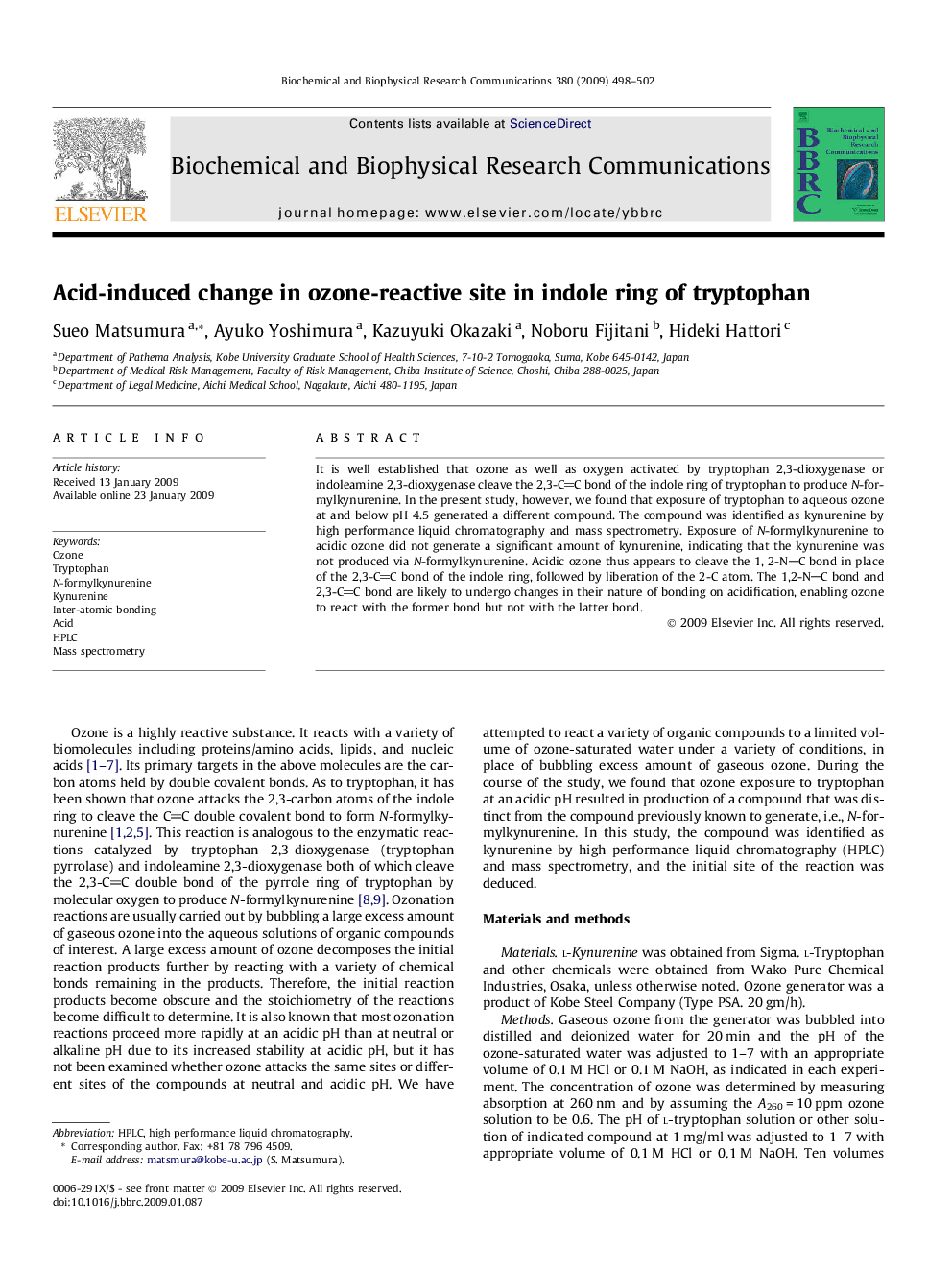| Article ID | Journal | Published Year | Pages | File Type |
|---|---|---|---|---|
| 1933890 | Biochemical and Biophysical Research Communications | 2009 | 5 Pages |
It is well established that ozone as well as oxygen activated by tryptophan 2,3-dioxygenase or indoleamine 2,3-dioxygenase cleave the 2,3-CC bond of the indole ring of tryptophan to produce N-formylkynurenine. In the present study, however, we found that exposure of tryptophan to aqueous ozone at and below pH 4.5 generated a different compound. The compound was identified as kynurenine by high performance liquid chromatography and mass spectrometry. Exposure of N-formylkynurenine to acidic ozone did not generate a significant amount of kynurenine, indicating that the kynurenine was not produced via N-formylkynurenine. Acidic ozone thus appears to cleave the 1, 2-NC bond in place of the 2,3-CC bond of the indole ring, followed by liberation of the 2-C atom. The 1,2-NC bond and 2,3-CC bond are likely to undergo changes in their nature of bonding on acidification, enabling ozone to react with the former bond but not with the latter bond.
